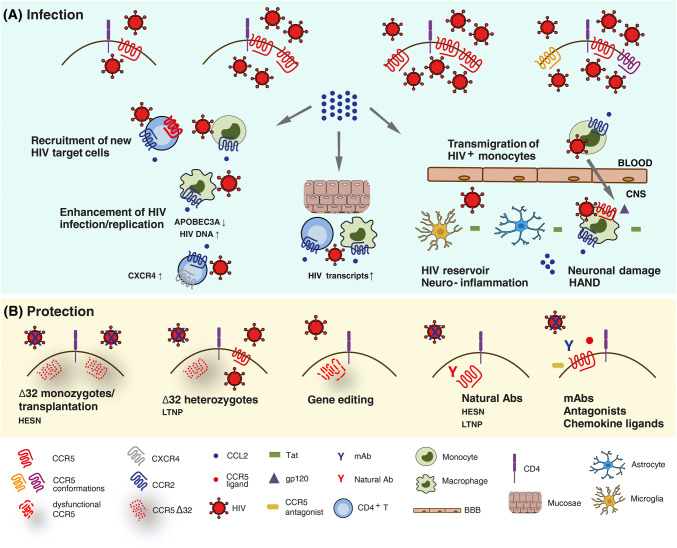Fig. 1.
Schematic view of the role of CCR5 and CCR2/CCL2 in the pathogenesis of HIV infection. a Infection by HIV occurs when the virus attaches to a susceptible cell and fuses with the cell membrane. The players in this process are the CD4 receptor and a co-receptor, mainly CCR5. The level of viral infection correlates with the number of CCR5 molecules expressed on cell surface, independently from their conformation. HIV-infected cells then release CCL2, which enhances HIV replication with cell type-dependent mechanisms, recruits new HIV target cells and mediates the transmigration of HIV-infected monocytes into the central nervous system (CNS) across the blood–brain barrier (BBB), thus contributing to neuroinflammation, neuronal damage and HIV-associated neurocognitive disorders (HAND). b Individuals homozygous for the CCR5Δ32 allele are protected against HIV infection, whereas those heterozygous for CCR5Δ32 progress slowly toward the disease. Natural Abs to CCR5 also confer protection against HIV infection, as they have been found in HIV-exposed seronegative (HESN) subjects and long-term non-progressors (LTNP). Pharmacological blockade of CCR5 through chemical antagonists, chemokine ligands, mAbs, and gene editing may as well protect from HIV infection

